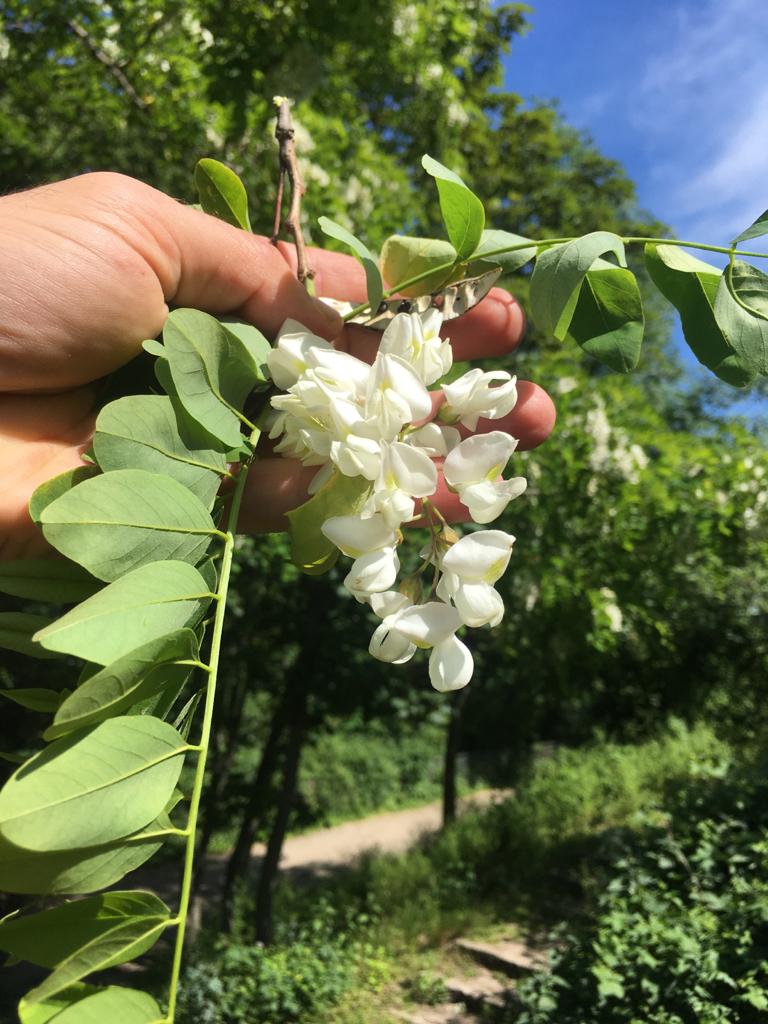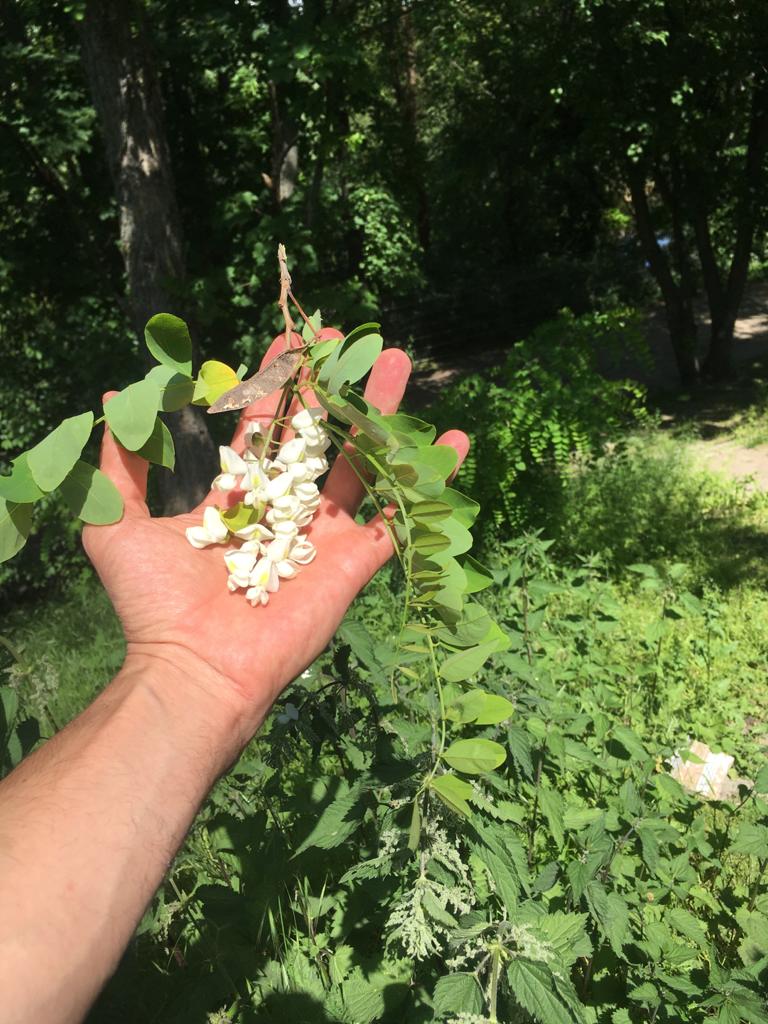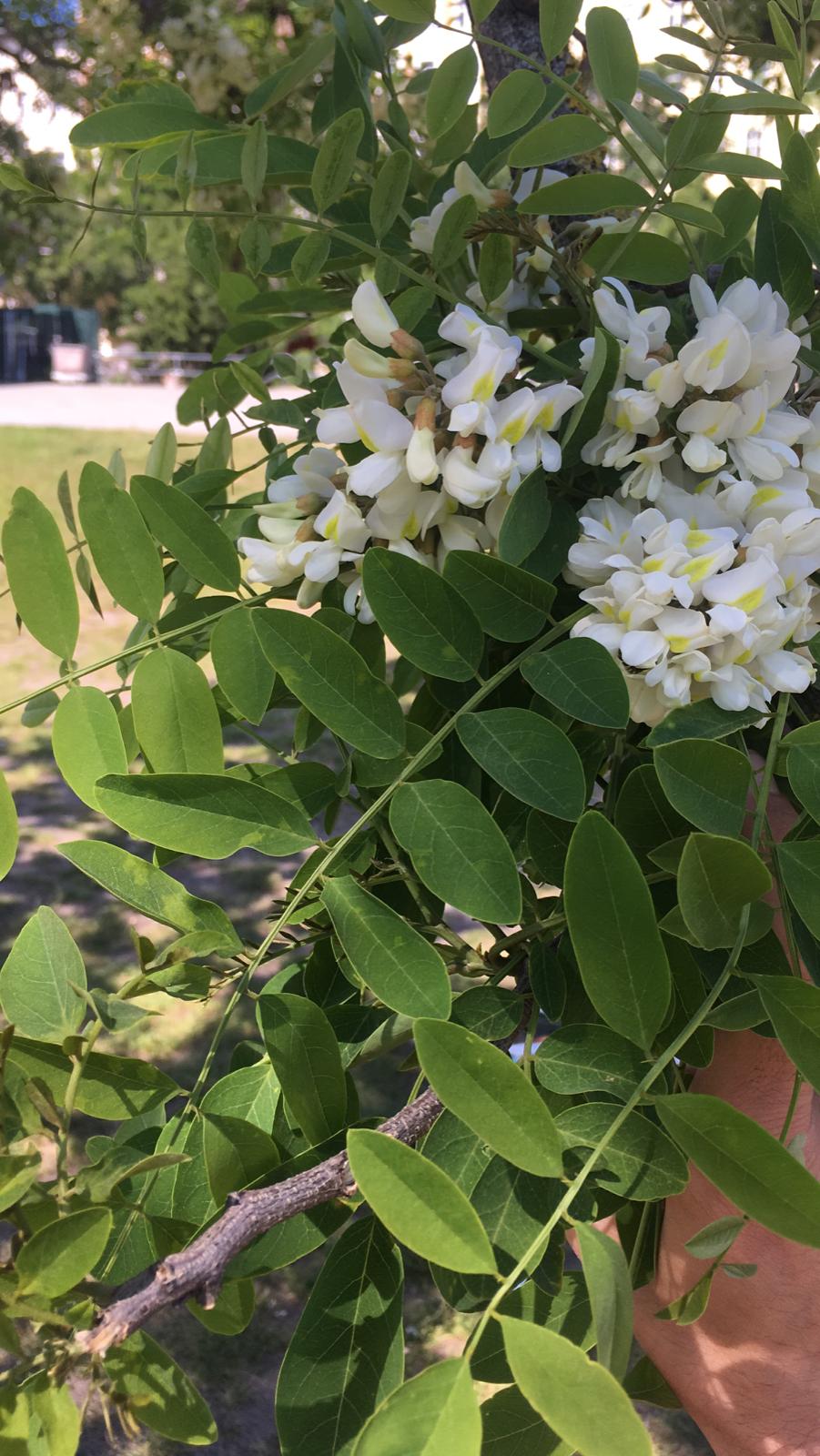“If you can’t beat ’em, EAT ‘EM”, as we always like to say.
Join us as we take a closer look at invasive edible plants that you’re likely to stumble across in Berlin and Brandenburg’s green spaces this spring and summer.
English: Black Locust/Fake Acacia
Deutsch: Robinia/Falsche Akazie
Latin: Robinia pseudoacacia

Why is it here?
Black locust was brought over from North America as an ornamental plant. Determined to spread its synthetic-grape-juicy scent as far and wide as possible, it quickly expanded its territory across the European continent.
And why the bad rep?
Essentially, it’s known for its persistence and dominance of open grasslands with its shade. It gains a strong foothold by stealing nutrients from smaller plants, which, in turn, reduces the general plant diversity of a given area.
How about the harvest?
The tree only blooms for a short two-week period sometime between May and June, depending on the weather. Keep your eyes peeled and noses open.

Can’t Beat It? EAT it!
Important: The flowers are the ONLY edible part of the black locust tree (see below)! Pick the flowers (careful, the thorns might fight back), place them in a mixture of sugar water and lemons, and let everything sit overnight. The water extracts flowers’ aroma which can then be cooked into a jelly with added jelly-sugar or boiled into a syrup for carbonated drink add-ons.
But Beware
ALL parts of this plant EXCEPT the flowers are POISONOUS!
30 leaves will put you 30 feet under.

ABOUT EDIBLE INVASIVE PLANTS
As foraging and fermentation enthusiasts, one of the best ways to support our environment and sustain ourselves is to harvest and process invasive species. Because conventional gardeners and farmers so easily demonise them, these precious plants are frequently overlooked and undervalued in the culinary world.
“So what makes a pest pesky? And why do we need to weed out all the weeds?” you ask. Our answer, “It’s all about perspective.” This is exactly why we’ve taken it upon ourselves to embrace invasive species for their abundance and celebrate their nutritious value.
Head over to the foraging section on our blog to explore the entire series!
DISCLAIMER (!)
The information provided on our website is meant to support you on your foraging and fermentation journeys. Edible Alchemy does not assume any liability for plants you pick, touch, process or consume.
Be sure only to consume plants if you are 100% certain you are able to identify them correctly and thus rule out the possibility that they are false friends in disguise. Always consider consulting a herbalist or botanist before consuming plants from the wild. If in doubt, always go without!
Extra caution is advised for children, pregnant women, women who are breastfeeding, and people with pre-existing health conditions or who are taking medication. If you ever experience any allergic or adverse reactions to plants, please consult your physician immediately.



I am obsessed with these. Just one problem. A lot of the flowers, (at least in the U.S.) have these teeny tiny little green caterpillars/worms!!! When you wash the flowers they seem to really lose their flavor. Any suggestions how to get them out? When the flowers have little tiny circle holes they are more likely to be there, but not always. As a kid I didn’t know what these trees were called or that the flowers were edible. That was long before internet, so I gave them my own name: giant thorn trees. You mentioned making a jelly with them, but is there a way to get the little green worms/caterpillars out besides pulling apart each flower or boiling?
hmmm worms are tricky – but you can try picking them, then putting them in the sun with a newspaper overtop or in a paper bag. often bug (im not sure about these worms though) crawl back out into the sun. leave them like this for 30 min and you should be relatively bug free. otherwise, best is to try to find some without those little guys. i dont even boil the flours but just put warm sugar water on them for 24 hours to get the flavour out – no washing otherwise the taste is gone.
Just infuse the flowers with the little buggars in there. When you strain the flowers you’ll catch the worms too.
i like your style 😉